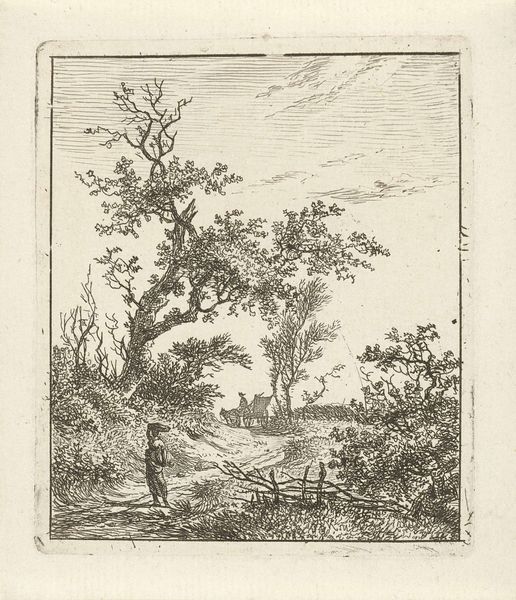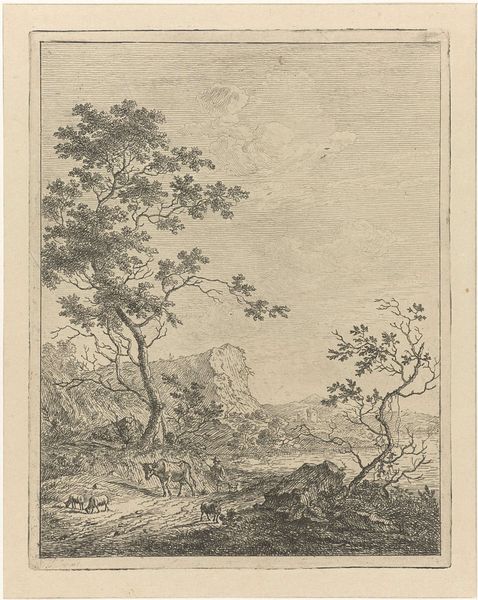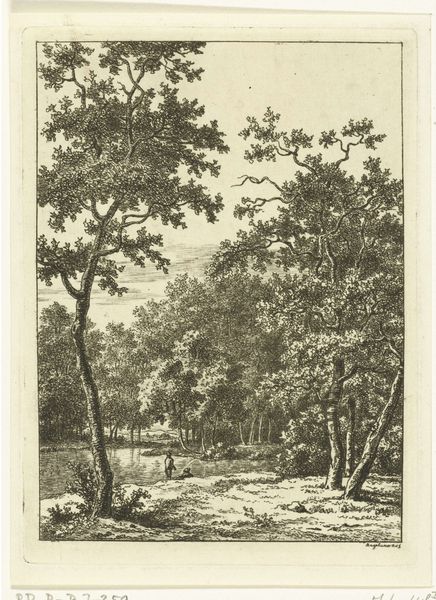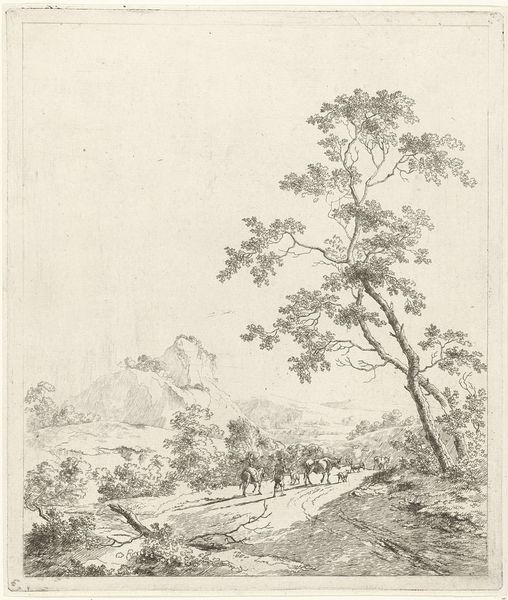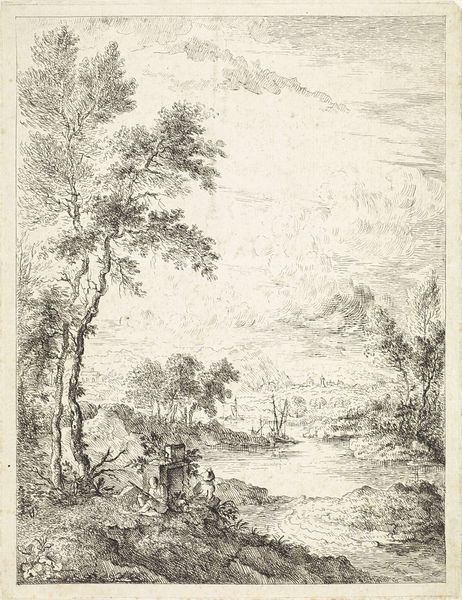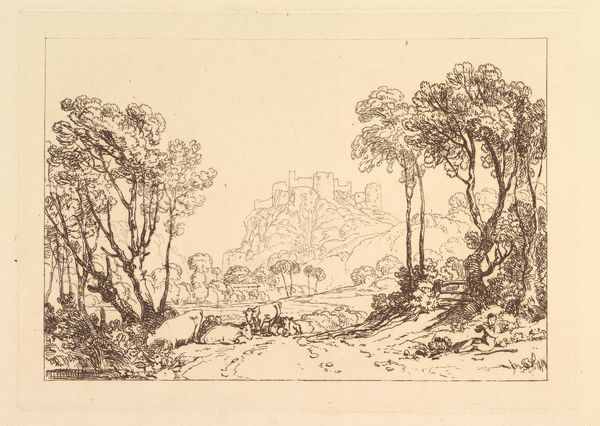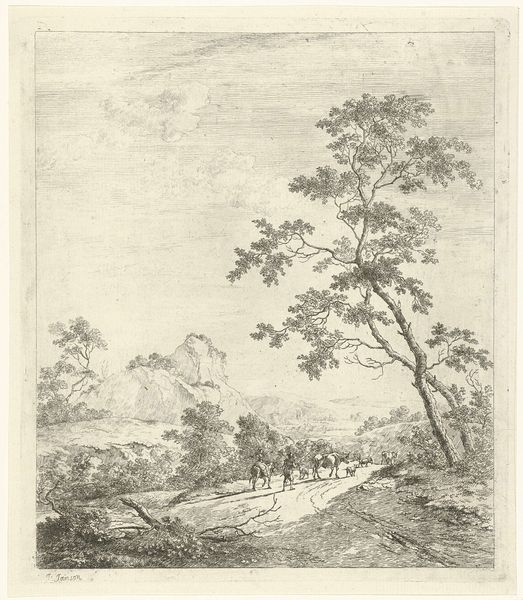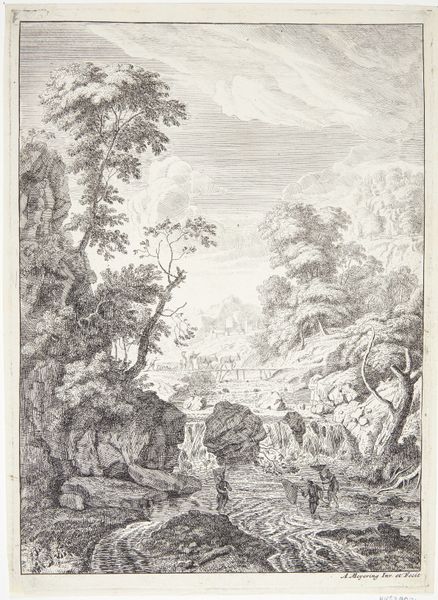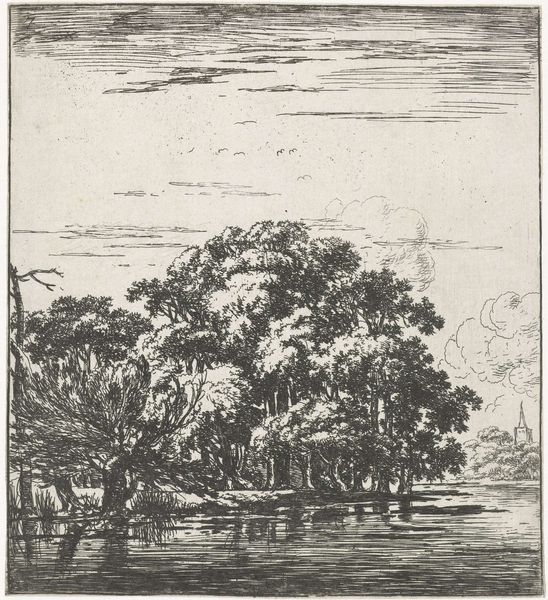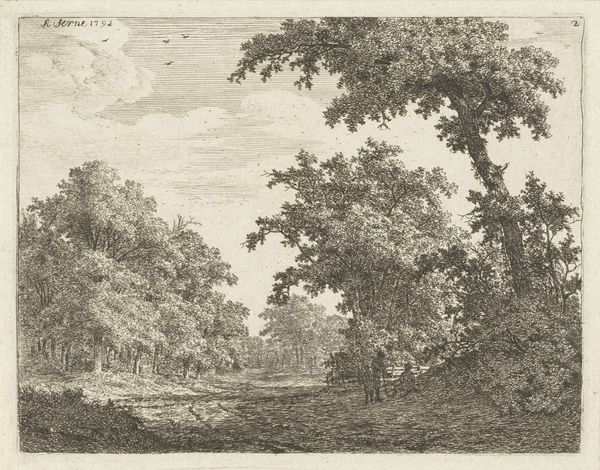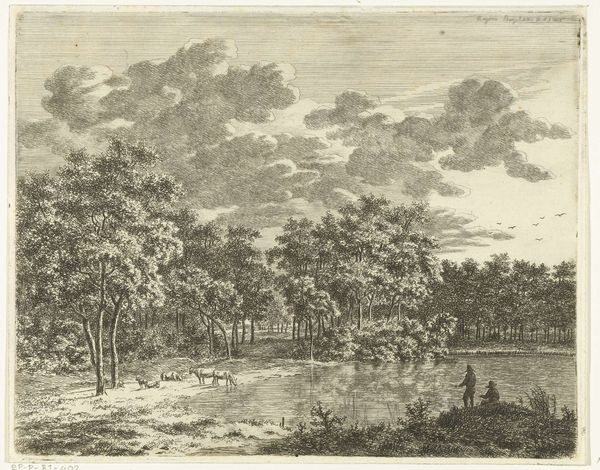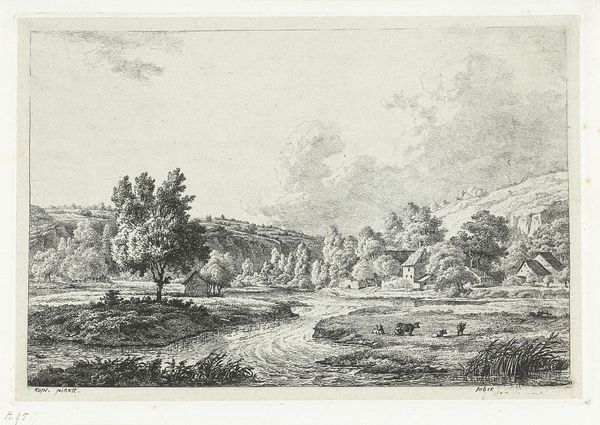
Dimensions: height 255 mm, width 212 mm
Copyright: Rijks Museum: Open Domain
Johannes Janson created this etching of a landscape with cattle in a river in the Netherlands sometime in the 1700s. It reflects the cultural interest of the time in pastoral scenes showing the lives of ordinary people. Here we see the influence of the Dutch Academy in the artist's use of line and composition. The print uses a high horizon line, framing rural figures within an idealized landscape that includes cattle, herdsmen, and bodies of water. Consider the politics of imagery in 18th-century Netherlands; this etching romanticizes rural life and glosses over the difficult labor of animal husbandry. We can understand the social conditions that shaped artistic production, as wealthy landowners collected such prints as symbols of their own power and status. To understand this work better, we can consult archives, letters, and other documents that reveal the public role of art in the Netherlands at this time. The meaning of art is contingent on the social and institutional context that shapes it.
Comments
No comments
Be the first to comment and join the conversation on the ultimate creative platform.
